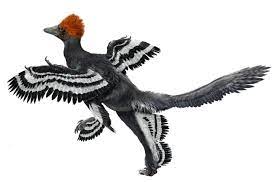
Bactrosaurus was an herbivorous genus of dinosaur that lived during the Late Cretaceous period, around 80 million years ago. It was a member of the hadrosaurid family of ornithischian (bird-hipped) dinosaurs, which also included the famous duck-billed dinosaurs. It was a relatively small dinosaur, estimated to have been between 4 and 6 metres (13 and 20 feet) long and weighing around 1,000 kilograms (2,200 pounds).
Bactrosaurus had a typical hadrosaurid body form, with a long neck, four-toed feet, and a long tail. Its head was relatively small and had a narrow snout with a beak at the end. Its teeth were arranged in rows and were adapted for grinding plant material. The most distinctive feature of Bactrosaurus was its armour. Its back and flanks were covered with large, bony plates, called osteoderms, which may have provided protection from predators. The exact form and pattern of these plates is not known, but they may have been arranged in rows or patterns, similar to those found in other hadrosaurid dinosaurs. Bactrosaurus is known from fossils found in Mongolia.
| Name: | Bactrosaurus dinosaurs |
| Size: | between 4 and 6 metres (13 and 20 feet) long and weighing around 1,000 kilograms (2,200 pounds). |
| Body: | Bactrosaurus was a member of the hadrosaurid family of ornithischian (bird-hipped) dinosaurs. |
| Neck: | Bactrosaurus with a long neck. |
| Tail: | Bactrosaurus long tail |
| Teeth : | Bactrosaurus teeth were arranged in rows and were adapted for grinding plant material. |
| Main Facts: | Bactrosaurus had a typical hadrosaurid body form, with a long neck, four-toed feet, and a long tail. Its head was relatively small and had a narrow snout with a beak at the end. |
Bactrosaurus was a species of hadrosaurid dinosaur that lived during the Late Cretaceous period. Bactrosaurus lived in large herds and were able to migrate long distances. It is thought that they were most likely gregarious animals and traveled in large groups.
The social behavior of Bactrosaurus is not well understood. It is possible that they may have engaged in cooperative behaviors such as assisting one another in foraging for food, helping to protect young, or even engaging in courtship displays.
When it comes to interactions between Bactrosaurus, it is likely that they would have engaged in some form of communication. Studies have shown that they may have used vocalizations such as honking, whistling, and croaking to communicate with one another. These vocalizations may have been used to signal danger, attract mates, or to ward off potential predators.
Bactrosaurus is thought to have had the ability to recognize individual members of their herd. This suggests that they may have had some form of social hierarchy. The leader of the herd may have been the most dominant individual, while other members of the herd may have followed their lead.
The social behavior and interactions of Bactrosaurus is not well understood. More research is needed to understand how these dinosaurs interacted with one another in their natural environment.
Bactrosaurus is a genus of large, herbivorous dinosaur that lived in the late Cretaceous period, approximately 70 million years ago.
It was a member of the hadrosaurid family of dinosaurs and is believed to have been a dominant species in the ecosystems of what is now Asia.
Bactrosaurus had a large impact on the ecosystems of its time. It was a large, plant-eating dinosaur that browsed on leaves and twigs from low-lying plants and trees. Because of its size and dietary habits, it had an immense impact on the vegetation in its environment.
As it foraged for food, it opened up clearings in the dense vegetation, allowing for smaller species to move in and occupy these new niches. This in turn led to more competition in the environment, as well as an increase in biodiversity.
Bactrosaurus also had an indirect impact on the environment through its feces. As it moved through the environment, it deposited large amounts of nitrogen-rich feces.
This, in turn, increased the fertility of the soil, allowing for more vegetation to grow. This, in turn, increased the productivity of the environment and enabled it to support more species.
Bactrosaurus also had an impact on other animals in its environment. Its large size and herbivorous diet meant that it competed with other large herbivores for resources.
This competition had a significant impact on the population sizes of other herbivores, such as hadrosaurs. By competing for resources, Bactrosaurus had a direct impact on the populations of other species in its environment.